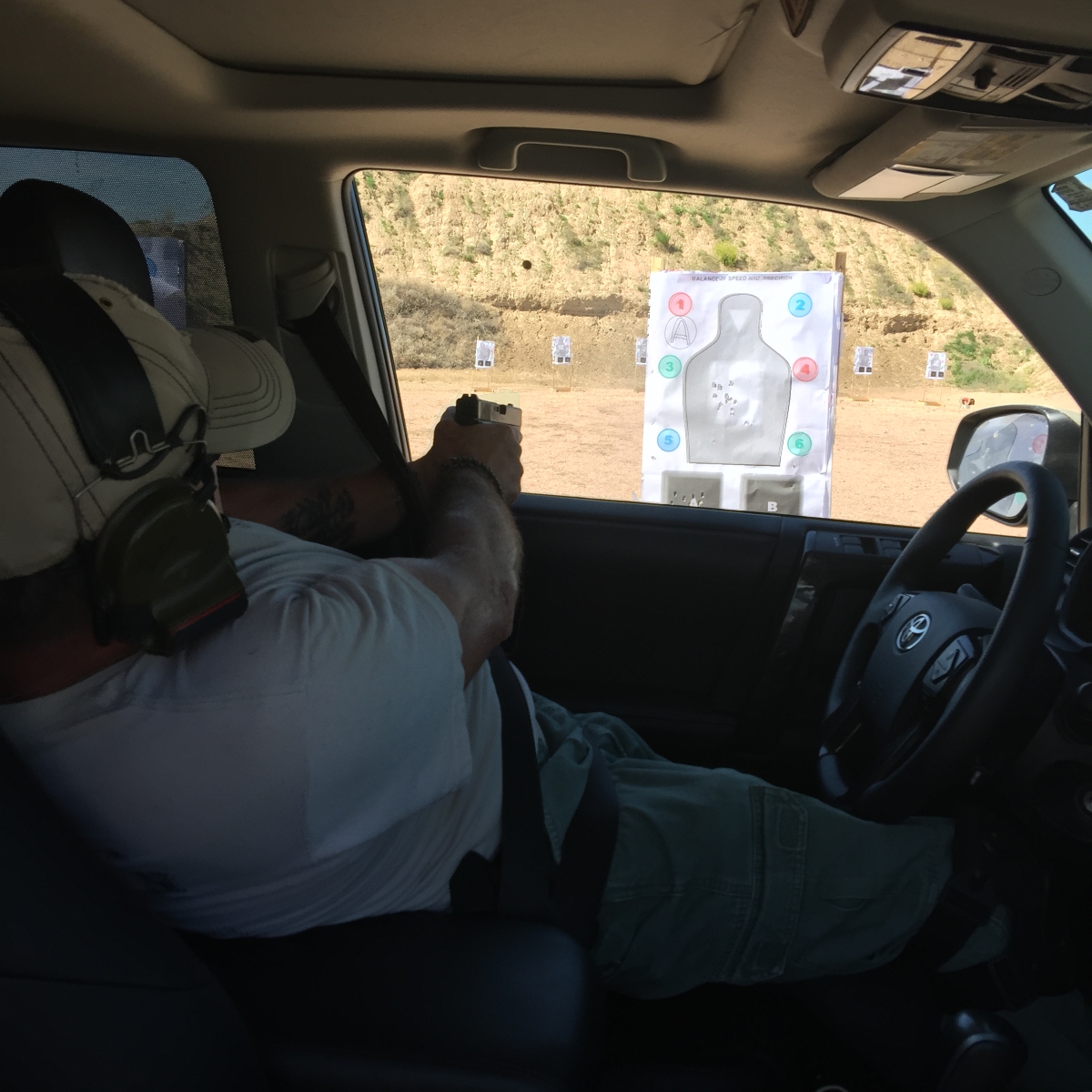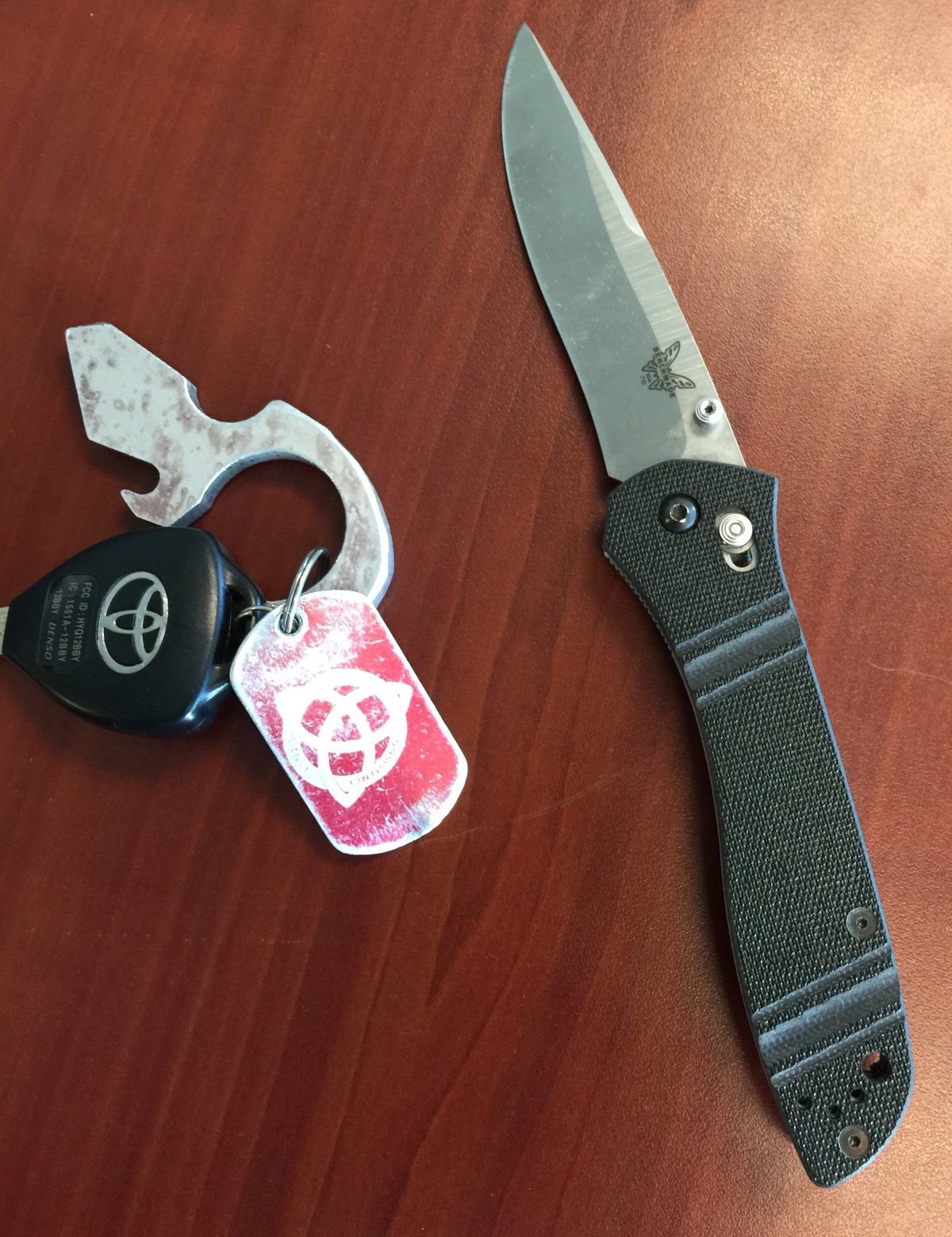
Train and practice with your firearms so you can employ them effectively in self-defense.
Photo: author
Developing Unarmed Self-Defense Skills
Unarmed defense refers specifically to taking action with your natural tools to distract or disable an attacker from being able to hurt you. Natural tools include your forearms, elbows, knees, shins, feet, hands, fingers, forehead, and teeth. When you are attacked in extreme close quarters (within two arms’ reach), the use of these natural tools will usually precede the use of any defensive tool out of necessity. The first area to focus on is actually surviving long enough to escape or begin affecting your attacker. Focus on defensive skills to protect yourself from being seriously injured. The emphasis on defensive responses at the outset of an attack should be designed to keep you from being knocked unconscious, having your ability to breathe compromised, or becoming immobilized. After surviving the initial assault, focus on getting into a position to use your natural tools to affect the bad guy’s ability to hurt you. Select close-quarters striking skills to inflict damage upon your attacker in the context of extreme close-quarters defense. While punches, kicks and open-hand strikes can deliver a lot of energy, they require more space and accuracy than strikes with the knees or forearms/elbows. I generally recommend that people look at the types of strikes with these natural tools that are taught in Muay Thai as a fundamental skill set. Grappling skills should primarily emphasize being able to escape from the control of your attacker, and secondarily, to gain control of his limbs and body. These skills are taught in Greco-Roman wrestling and Brazilian jiu-jitsu. Understanding anatomy and physiology is important to your development of unarmed skills, especially in the grappling arena. While you don’t need a medical doctor’s knowledge of terminology or structure, an experiential understanding of how limbs and joints move—or don’t move—will serve you well in trying to maximize your movement and leverage while establishing control over your opponent. The best way to develop this knowledge is to spend time grappling with other human beings. Unlike striking or shooting skills, grappling skills virtually require a training partner to be developed in any meaningful way.
When you are ready to learn and practice your unarmed skills, look for schools offering “combative” or “defensive” skills, not sport-oriented programs. While the underlying skill set may very well be the same, especially in the early weeks and months of your study, the context of intended use is radically different. Finding a teacher who understands the nature of real-world fights and the use of the skills they teach in life-and-death situations is a must.It is not necessary to work your way up to the highest levels of a specific martial art in order to become very capable at unarmed defense. In fact, studying the minutia and extremely advanced points of any art may detract from your ability to focus on the more practical basic defensive skills. I often recommend that people interested in getting started in this area plan to spend three to four months as a basic student of Muay Thai and six months in a Brazilian jiu-jitsu school to learn the fundamental skills of striking and grappling, respectively. That said, while it may not take you long to learn the fundamental skills you need for self-defense, be prepared to spend a lot of time practicing and maintaining them.
Self-Defense Tools
A variety of tools exist that you may choose to own, learn how to use, and carry to enhance your ability to defend yourself. These items include guns, knives, chemical sprays, batons, and electrical devices. You can also learn to use everyday items that you carry, such as keys or pens, as defensive tools.
Firearms are the most potent defensive tool you can choose, but they require a significant amount of responsibility and training to own and operate properly. Defensive firearms come in many shapes and sizes, generally falling into three categories: rifles, shotguns, and handguns. Of the three, the handgun is the most versatile for self-defense. While the rifle and shotgun offer more potential power and accuracy, the ability to conveniently carry a firearm on your body while going about your daily routine and the handgun’s ease of use (provided you choose yours appropriately) trump its larger cousins’ qualities.When selecting a defensive firearm, focus on reliability and efficiency above all else. In your training, concentrate on applicable skills for the nature of a defensive shooting, not competition or marksmanship skills that may or may not apply. Many books have been written about defensive firearms selection and training (my last one was Combat Focus Shooting Evolution), so I will not go into much detail here. Many videos and other articles here at Personal Defense Network can guide you in this area as well.
Many people who are “into” self-defense take it as an obvious assumption that anyone else interested in self-defense will want to own and carry a gun. Of course, that is not the case. There are many reasons for not being interested in carrying a firearm that do not equate to a lack of sincerity in regard to preparation for personal defense.
Many people look at chemical and electrical devices as viable options for defensive tools. Each requires its own set of educational and training steps to be used as intended, and each has strengths and weaknesses. Chemical sprays cause distraction and disability in your attacker but can also contaminate you, especially in closed spaces or at extreme close quarters.
Electrical devices tend to require training very similar to unarmed defense (for contact tools) and/or firearms (for devices that utilize projectiles to deliver the electrical charge).

Any tool carried expressly for defensive use is probably governed by state and local laws.
Photo: author


Sounds like something I need
Unfortunately in this litigious society, an individual defending his or herself should be aware of the financial consequences of their action REGARDLESS of the justification, in a totally righteous act of self defense you could be brought into bankruptcy simply by paying your legal bills. Get self defense insurance for both criminal defense and civil liability. Especially if you have substantial assets! Don’t let self defense leave you with no defense.Ask yourself the question. Are your assets protected if you must use deadly force? The vicious plaintiff’s bar will run you on an asset search and be lined up outside the dirtbag family’s door.
Inspirational article. I identify with some of the comments by the tough ol' men below and the responses encourage me! I've got arthritis like youse guys and a reconstructed heart to boot; but I'm gonna try to find a self-defense teacher who'll custom his training to my abilities.
Thx for the info Working on funding options & etc...Etc...ETC
Great instruction here, a lot to consider, but with time spent wisely in assessing your personal situation and abilities and seeking proper instruction, it can and will all come together effectively.
Having served in the military during the Viet Nam War and the Cold War and now being the ripe old age of 71 I feel qualified to comment on this subject with regard to older folks. my favorite unarmed defensive tool is my keys. I have crossed many a dark parking lot with my keys in my fist with one or two protruding between my fingers near my knuckles. The object is not to have a "Rocky" one punch knockout but to do enough damage with one punch to give you time for plan B (fight or flight).
So far so good. Keep lt comming. I am 80 and still work out. I beleave you HIT first and scare the sh-t out of them with ferocity.
I have been thinking about the need for unarmed self defense-training, and what the most appropiate training might be. I was wondering about Krav Maga vs your recommendation of Muay Thai and BJJ?
all good advice, one very important item that affects all of it. exercise. as an old fart i will never be in the shape i was at 40, but you can always build muscle and strength goes a long way in protecting you and yours. i hate it so it is hard to get the enthusiasm and go through the pain. i do love the results. move or lose it!
I would like to know what you would recommend for those of us that are older and suffer from physical ailments like arthritis that prevent us from any really meaningful unarmed self defence. I am a CCW holder and I always carry but I worry about the unexpected encounter (when you've let your guard down for one reason or another). When I was younger I had the strength and agility to fight back but now I'm not sure I'm quick or strong enough to put a meaningful defense. If I have the time to deploy my weapon I'll be OK but....